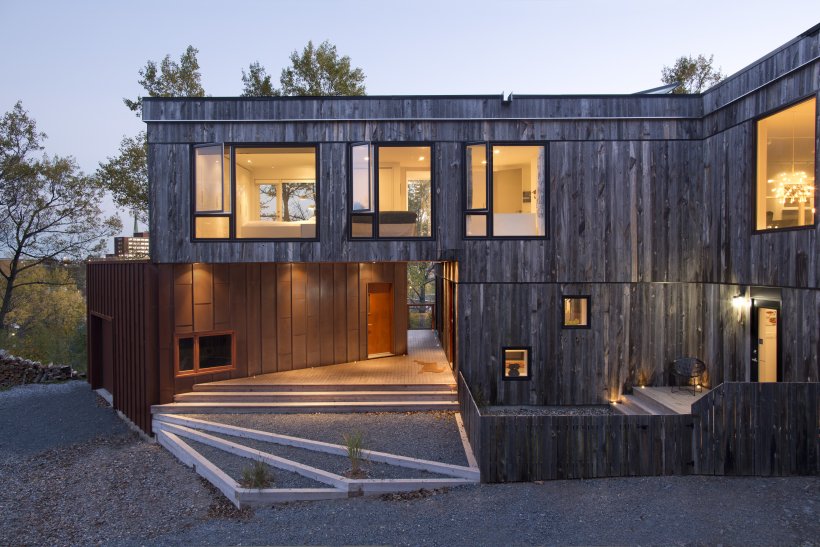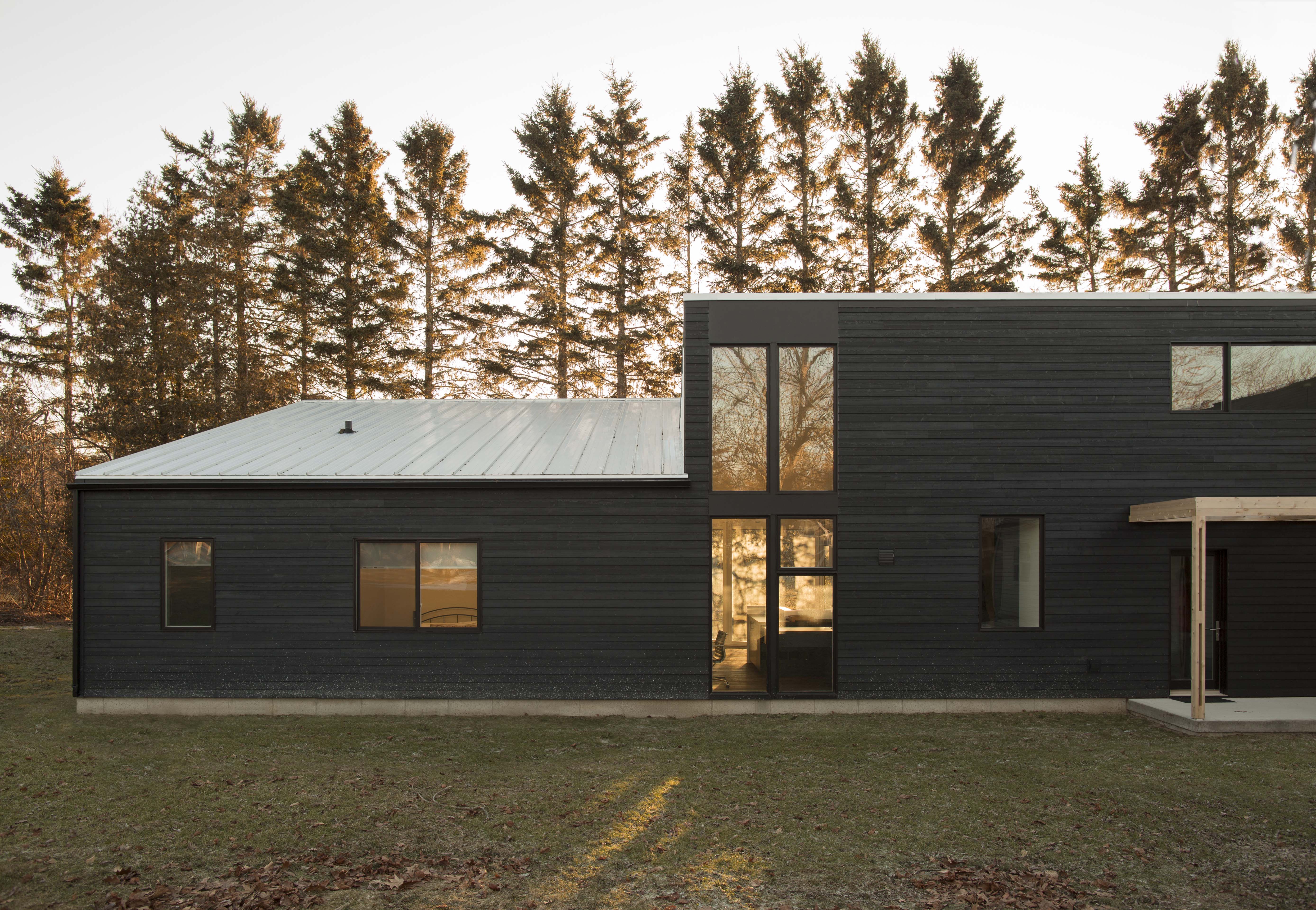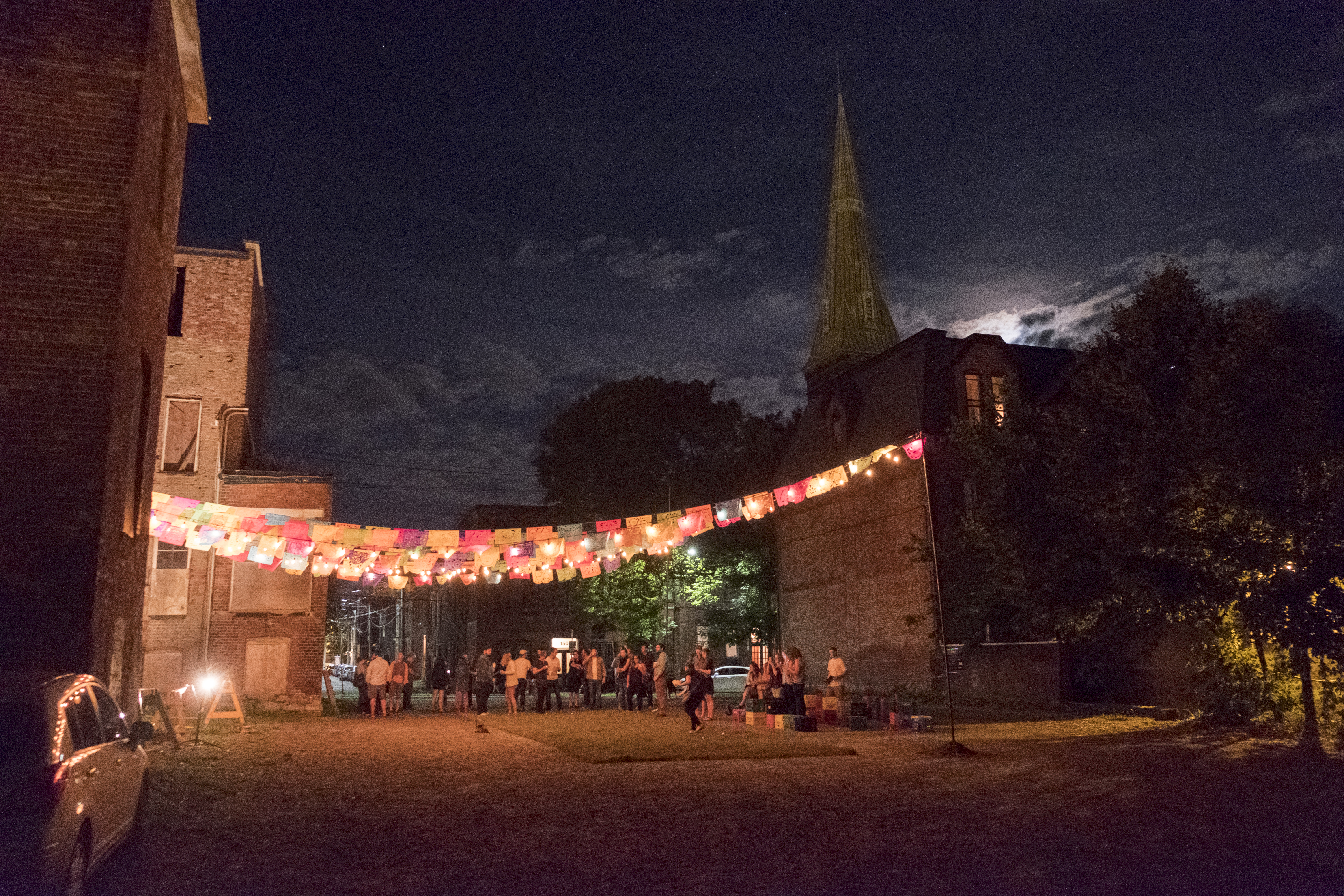
04.01.17 - Q&A: Alumna Monica Adair, Acre Architects
In 2016, the Toronto Star profiled Monica Adair (MArch 2005) among young architects who “have been turning heads in the profession, while Wallpaper listed her firm, Acre Architects, in its list of 20 “breakthrough practices from around the globe.”
How do Adair and her partner at Acre Architects Stephen Kopp (MArch 2005) — also her husband, and yes they met here at the Daniels Faculty! — continue to achieve recognition and grow their small New Brunswick-based firm in such a competitive field? Master of Architecture student Ilana Hadad sat down with Adair to learn about her unique approach to business and design.
You describe your practice as developing “storied architecture.” What do you mean by that?
Storied Architecture, for us, is about helping people live great stories. It’s a way for architecture to have permanence beyond physical bricks and mortar. You may never see a building, but you may have learned about it. And rather than hear about a beautiful window or a really great façade, we want to hear: “this changed the way we live.” One of the best compliments we’ve ever received about one of our projects came from a client who said “We get along better as a couple.” That is a really big thing. If you can change the way people think, you can change the way they live their lives.

Why is collaboration so important in your practice?
It’s easy to talk about collaboration as a buzzword, but there are so many talented people out there; it’s really about corralling them. Things become richer when you incorporate other people’s skills and talents. Sometimes it feels we’re on the edge of something really great, but then we ask: “where does the frame start?” and we realize that we’re only looking at it relative to our own world. When you start collaborating with other people, you start to see the world through a new lens.
Canadian Builder’s Quarterly wrote that every year you embark on a non-traditional project or competition to keep sharp. Why is this important to you?
There are few architects in New Brunswick, which limits our dialogue with others in the field, so we want to make sure that we’re not getting complacent or comfortable. Instead, we’ll challenge ourselves by entering a competition or going after a new project. We’re now doing fewer competitions, but pitching more projects. We look for a need and we propose a project for it. Instead of waiting for projects to come, we chase them.

How do you decide which projects to chase?
It’s something that evolves out of relationships. Sometimes I feel like the clients I’m going to be working for in the future are the people I’m just getting to know now. It takes years for people to trust you and to learn what you have to offer. You don’t just start a project. You hone a project. You develop a relationship. Even clients that I have today, like Picaroons Microbrewery — our relationship may have started five years ago, but it’s only now that we really feel like we’re on the same side of the table and asking, “where can we go together?” The owner knows we’re looking after helping him build a successful company.
We also recently broke ground on a wedding retreat outside of Austin, Texas. This was a relationship that started as a business mentor turned friend, turned client. At the end of the day, these meaningful relationships with people who are willing to think big are the grounding for all our projects.
How did it feel to receive the Royal Architectural Institute of Canada's 2015 Young Architect Award?
It’s definitely humbling. I remember we were just moving offices, and I got the letter and I gave it to Stephen and said “can you read this a couple times?” I just didn’t believe it. I’m used to opening letters and saying “oh yeah, we didn’t get accepted.” In life you don’t always get people to validate your work. You’re lucky when you do. So you take it when you get that. It’s really nice.

What do you like about living and working in Saint John?
It’s funny because I’m still getting used to saying that I live in Saint John again. It really is a great place to start and grow a business. It’s full of people that want great things to happen so there is a lot of support. It feels like a family, a great community. I’ve lived in Taiwan and Spain, and I’ve lived in Toronto and New York. I’m open to where the world is going to take me, but for now it’s a beautiful place to grow and we are excited to exercise the potential that Saint John has to offer.
Your first project as a firm was a 100-square-foot patio. What did you learn from that project that you still apply to projects you’re doing today?
The importance of good-quality craftsmanship. The patio was temporary, built to come down every year and get thrown in the back of a shed for the winter. If it hadn’t been built properly, the first year they took it down would have been the end of it. It wouldn’t have gotten published the next year. It wouldn’t have ended up in “top places to kiss in Saint John.” If you want something to last, you have to build the care to make it last.
We also learned that small projects are as important as big projects. A small project is still somebody’s dream. It’s still important to their business. So treating small projects with the same value, regardless of the scale, is important.
How did your time at U of T help inform the work you are doing today?
I loved architecture school. I think as a student you don’t realize it, but the stuff that you do in school stays with you forever. And it touches other people. If you work really hard on one project, that project will influence all your other projects forever. Your thesis work follows you. It’s part of who you are. I’m proud to be an alumna here.
Do you have any advice for current students?
Don’t be entitled; be engaged. Entitlement kills creativity. Engagement, in a way, is the opposite. It says that you’re willing to make a contribution and listen to the people around you and hear what they have to offer. It’s an active position versus a passive one. Be open to the world. See what it has to offer. Be open to be perpetually learning.
Image credits, top to bottom:
1: Into the Wild. Saint John, NB | Photo by Mark Hemmings
2: The Centennial. St. Andrews, NB | Photo by Sean McGrath
3: Tinkers Orchard, Kingston Peninsula, New Brunswick | photo by Mark Hemmings
4: LeParc - Petanque. Part of Third Shift Sait John, NB | Photo by Mark Hemmings

